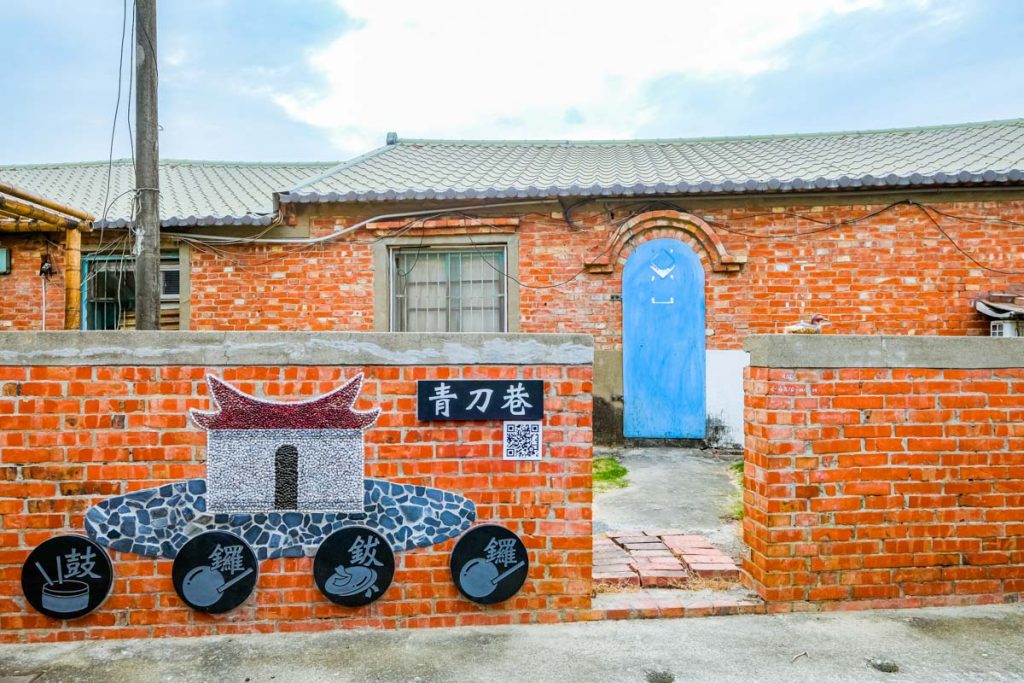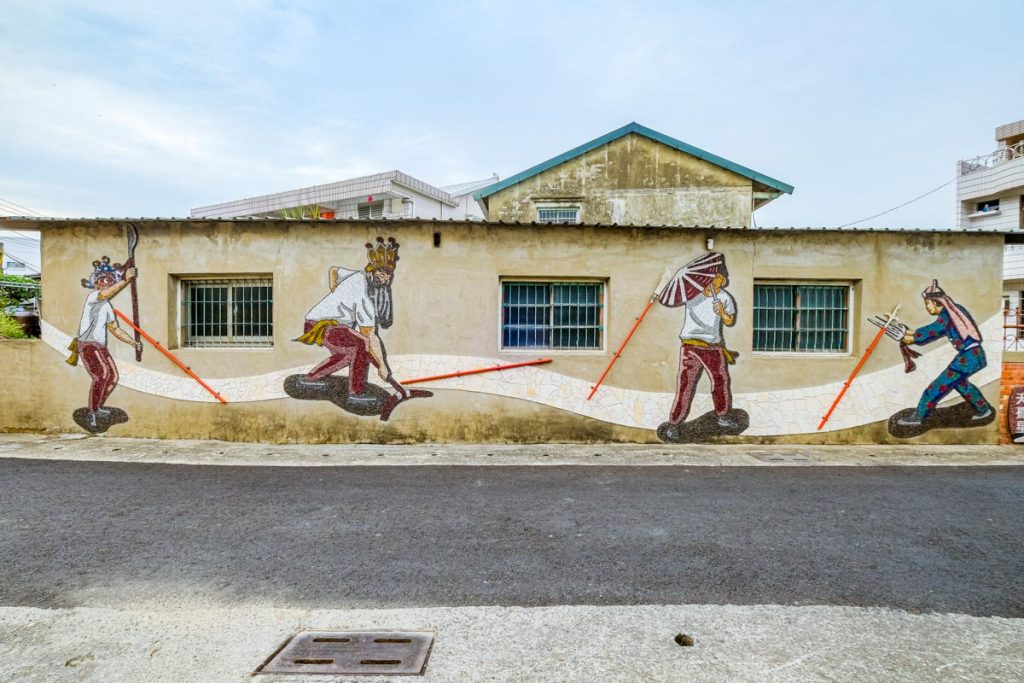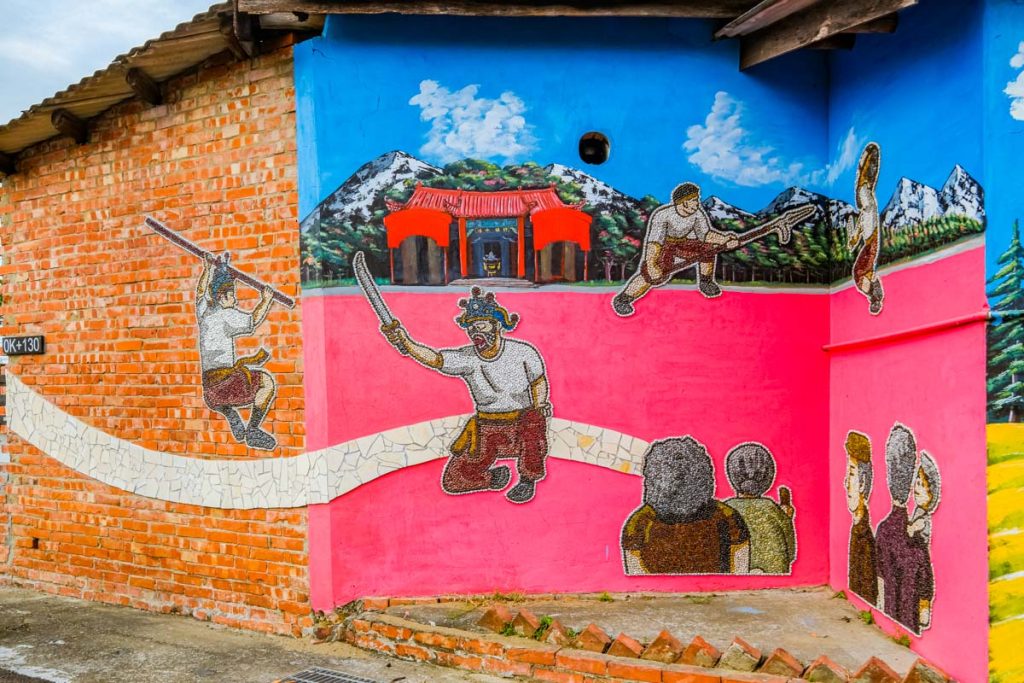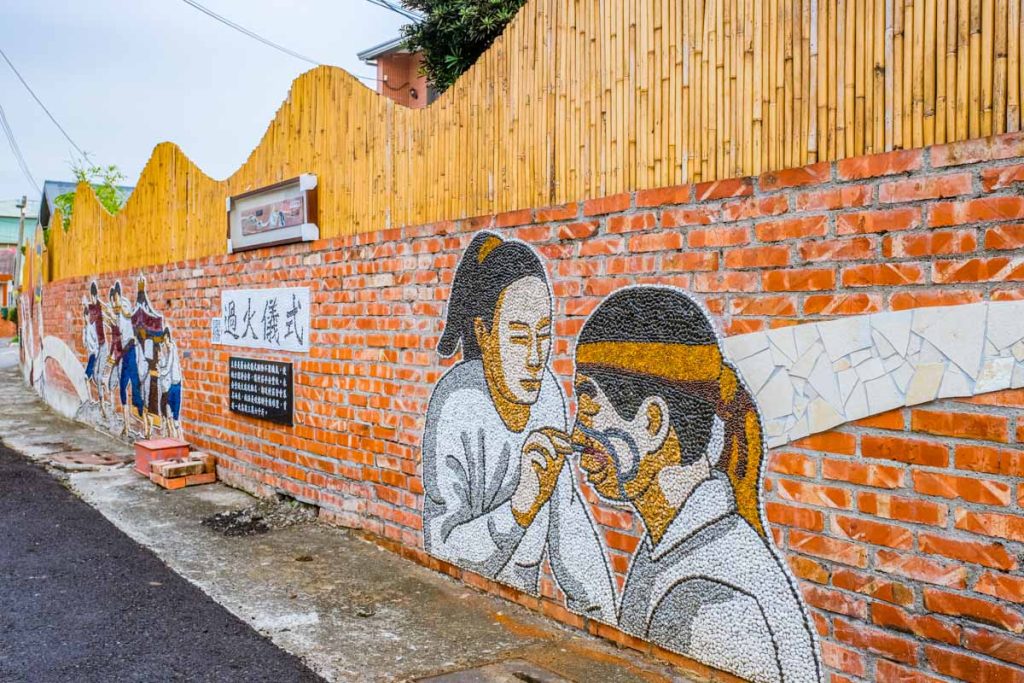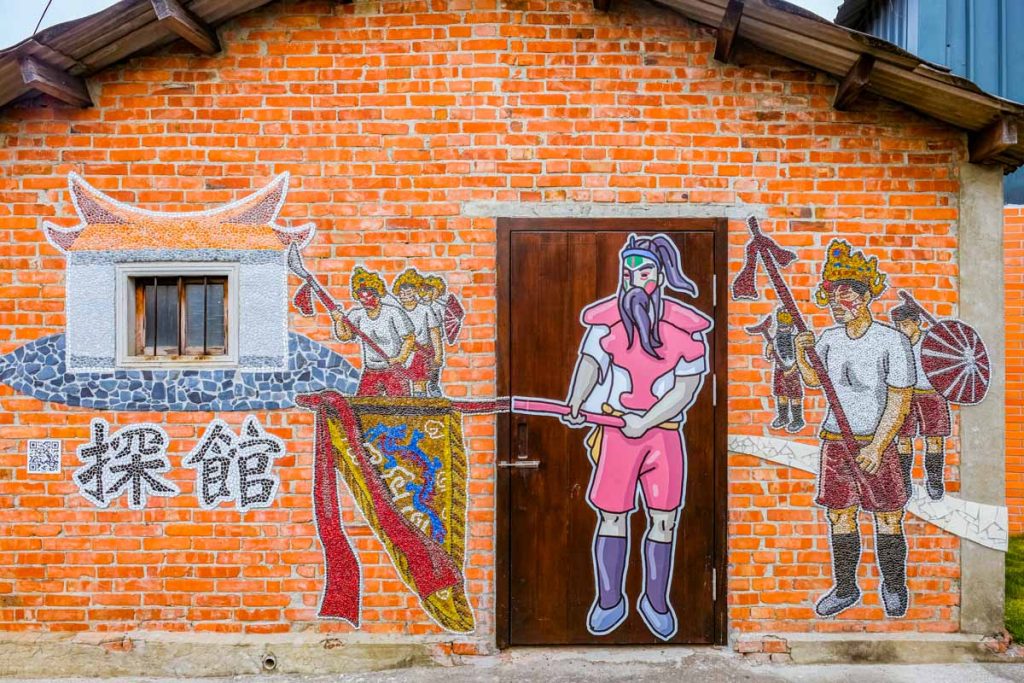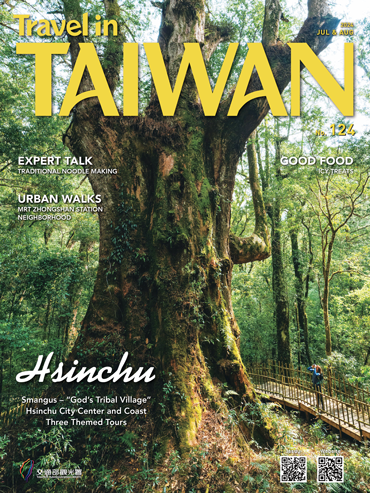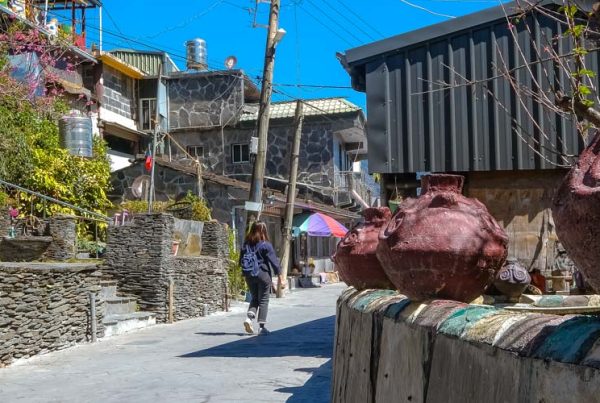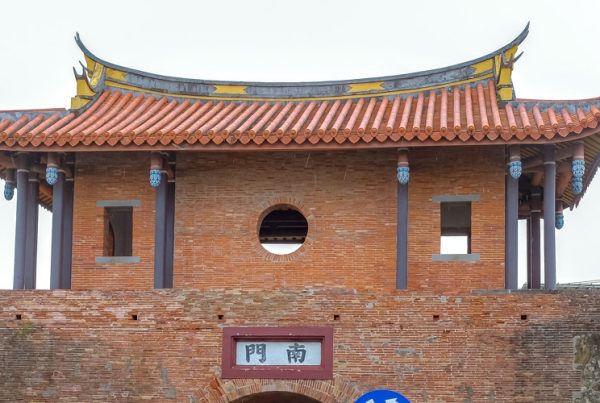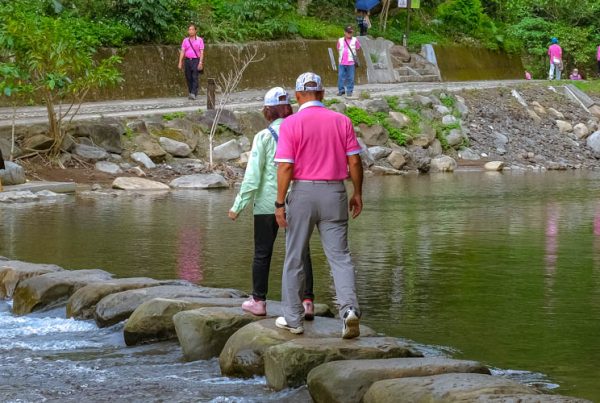Visiting Some of Tainan City’s Rural and Coastal Districts
TEXT / STEVEN CROOK
PHOTOS / ALAN WEN, VISION
Following the 2010 city-county merger, Tainan became one of Taiwan’s six special municipalities. Divided into 37 districts, its population now stands at 1.86 million. Most residents and the bulk of tourists stay in and around the urban core, an agglomeration of busy yet charmful neighborhoods cherished for their rich architecture and character.
Far fewer people live along Tainan’s windswept coast, in the “pineapple belt” close to the central-mountain foothills, or in the bucolic northern third of the sprawling municipality. Because young people prefer bright lights, and agriculture has taken a back seat to modern industries, these areas have been slowly depopulating since the 1980s. This is a trend community activists, entrepreneurs, and local officials are now trying to reverse via a range of imaginative projects that leverage local culture and produce to attract domestic and international visitors.
To draw the discerning traveler’s attention to Tainan’s less-visited corners, Travel in Taiwan recently explored some of these places and met with shopkeepers, chefs, and farmers committed to making a difference at the grassroots.
Content
Xinhua District/Xinhua Old Street
Thanks to a cluster of interesting attractions and its proximity to central Tainan, Xinhua District is an ideal destination for half-day or full-day excursions. Green Line buses from Tainan Railway Station (GR12, GR16, GR17, and Green Main Line; 2384.tainan.gov.tw/newtnbusweb) take around 45 minutes, and run at least twice an hour.
It’s a three-minute walk from Xinhua’s bus station to the stretch of Zhongzheng Road better known as Xinhua Old Street. The ornate and highly photogenic two-story shophouses, built for local merchants in the 1920s and 1930s, reflect that era’s infatuation with Art Deco, Baroque, and pseudo-Western styles. No two buildings are the same, so do take some time to appreciate the balustrades, parapets, pebble-dash façades, plaster laurel wreaths, and expressions of classical motifs. Several houses still bear the surname of the families that commissioned their construction almost a century ago.

Safety Sewing Shop
If you’re approaching from the bus station, you may want to first drop in at Safety Sewing Shop. This shop sells items for needlework enthusiasts such as thread and patterns, as well as hand-sewn bags and baby shoes. In the rear of the store is a small Chinese-language exhibition sharing a bit of history about the Old Street and some information about how the shophouses have been repaired.



Safety Sewing Shop
(安全針車店)
Tel: (06) 590-0883
Add: No. 394, Zhongzheng Rd., Xinhua District, Tainan City
(台南市新化區中正路394號)
Hours: 10am~6pm; Wednesday~Sunday
FB: www.facebook.com/safetysewingshop
Chang Tai Pharmacy
Also on the eastern side of the street, and just a few doors to the south, the former Chang Tai Pharmacy now houses two businesses. The store on the first floor sells dried fruit, handmade soaps, and other cultural-creative products.


Upstairs, Liho is tasteful in every sense of the word. The name’s Chinese characters render a common Taiwanese-language greeting, while the kitchen prepares a range of healthy meals and beverages that varies from day to day. While you’re here – expect to linger – head to the balcony for a pigeon’s perspective of the Old Street.






Liho Food
(立賀佇遮)
Tel: (06) 590-3409
Add: 2F, No. 203, Zhongzheng Rd., Xinhua District, Tainan City
(台南市新化區中正路203號2樓)
FB: www.facebook.com/lihofood2021 (Chinese)
Hours: 11:30am~7pm (Thursday~Sunday)
Jinfa Rice Shop
Diagonally across Old Street from Safety Sewing Shop is Jinfa Rice Shop. In business since 1872, it has in recent years shifted from simply selling various types of rice in bulk to a more tourist-oriented mix of packaged grains, rice-based snacks, and processed items such as fermented and flavored glutinous rice. The decommissioned husking machine which occupies a quarter of the floor space is a marvelous vintage contraption. (The grains vendor at No. 425 has a similar machine.)



Jinfa Rice Shop
(晉發米穀商店)
Tel: (06) 590-7232
Add: No. 439, Zhongzheng Rd., Xinhua District, Tainan City
(台南市新化區中正路439號)
Hours: 9am~1pm, 3pm~7pm (Thursday~Monday)
Taixiang Cake Shop
The next stop on your Old Street tour should be Taixiang Cake Shop, which sells traditional baked goods. Both hollow, brittle puffed cakes and circular pastries less than 1cm thick are available in a range of flavors, including plum and brown sugar.



If you’re looking for food gifts that travel well, consider the fruit cake, but bear in mind that the recipe doesn’t include preservatives, so it’s best eaten within a few days. These are bland-looking disks quite unlike cakes made with dried or candied fruits in Western countries, yet the citrusy paste inside makes for a highly satisfying snacking experience.

Taixiang Cake Shop
(泰香餅鋪)
Tel: (06) 590-6688
Add: No. 431, Zhongzheng Rd., Xinhua District, Tainan City
(台南市新化區中正路431號)
Hours: 8am~8pm daily
Dongcheng Douyou Store
Long regarded as one of the “seven kitchen necessities” in Han Chinese tradition – the others being rice, oil, salt, vinegar, tea, and firewood – soy sauce remains both a key condiment and a crucial flavoring ingredient in Taiwan. For anyone who cares about the soy sauce they use, Dongcheng Douyou Store is worth a close look.


In addition to sauces for vegetarians and vegans (some soy-sauce manufacturers use flavor enhancers derived from fish or meat), sauces optimized for braising pork, and sauces made from non-GMO beans, this shop sells vinegars and spicy and non-spicy bean paste (doubanjiang, commonly added to beef noodle soup). The parent company has been making soy sauce in the Xinhua area for more than 65 years.

Doucheng Douyou Store
(東成逗遊商店)
Tel: (06) 590-8175
Add: No. 423, Zhongzheng Rd., Xinhua District, Tainan City
(台南市新化區中正路423號)
Hours: 8am~6pm daily
FB: www.facebook.com/damujiang.douyu
Youth Library at Xinhua Public Hall
Just west of Xinhua Old Street, a busy morning market operates between dawn and midday. It can be accessed by either Xinyi Road or Lane 369 on Zhongzheng Road. As in traditional markets throughout Taiwan, you can be sure that some of the vegetables sold here were harvested mere hours earlier from fields just a few kilometers away.


Built during the 1895~1945 period of Japanese rule, to serve as a venue for cultural performances and other public gatherings that would uplift local society and inculcate a sense of loyalty and gratitude toward the colonial authorities, the Former Xinhua District Public Hall was in 2018 restored and repurposed as the Youth Library at Xinhua Public Hall. It is east of the Old Street, along Zhongshan Road.
Save for a few necessary modernizations, its renovation was so careful and thorough that it now looks just as its designer must have intended – a landmark of eye-pleasing elegance and symmetry. The Youth Library is open from Wednesday to Friday, midday to 4pm; access is via the main library building next door. There’s no need to plan your visit around these limited opening hours, however; the building’s exterior is far more alluring than what you’ll find inside.
Youth Library at Xinhua Public Hall (former Xinhua District Public Hall)
(新化公會堂青少年圖書館/原新化郡公會堂)
Tel: (06) 590-2658
Add: No. 134, Zhongshan Rd., Xinhua District, Tainan City
(台南市新化區中山路134號)
Website: www.twtainan.net/en/attractions/detail/5769
Xinhua Elementary School Ho-an-den
If you’re the kind of person who can’t get enough of Japanese-era relics, walk a short distance along nearby Minsheng Road (No. 73) to see the Xinhua Elementary School Ho-an-den. Until 1945, every school campus on the island featured one of these tiny shrine-like structures. Following Japan’s defeat, all but three were demolished.
Each Ho-an-den contained a photograph of the reigning emperor and a copy of a short text titled Imperial Rescript on Education. The Rescript urged the emperor’s subjects to respect the principles of filial piety, social harmony, and loyalty to the state. On the emperor’s birthday and other important dates, the Ho-an-den was unlocked and the text read aloud to students and teachers.
1934 Historic Restaurant at Xinhua District Council House
A more conventional attraction, also from the Japanese period, is the 1934 Historic Restaurant at Xinhua District Council House. Visitors might be surprised to learn that this dignified Russian green-façade landmark was paid for by a private donor. Even more unusual is that, prior to it being repurposed as a restaurant, the former government office was temporarily moved to an adjacent plot of land so an underground parking lot could be built here.



The restaurant, which serves a range of hotpots, steaks, and other hearty main dishes, sometimes hosts live music. If you do step inside, remember to look up. You’ll be astonished to see just how much wood was used to build a structure that, from the street, looks as if it’s 100-percent concrete. For this writer, this exemplifies the appeal of small-town Taiwan: With a little effort, there’s so much to see.
1934 Historic Restaurant at Xinhua District Council House
(新化街役場1934街役場古蹟餐坊)
Tel: (06) 590-5599
Add: No. 500, Zhongzheng Rd., Xinhua District, Tainan City
(台南市新化區中正路500號)
Hours: 11am~9:30pm (closed on Monday)
Website: www.twtainan.net/en/attractions/detail/4530
Houbi District/Jingliao Old Street
Houbi District in the northernmost part of Tainan offers classic rice-growing scenery, yet few people elsewhere in Taiwan knew much about the area until 2004, when an award-winning documentary called Let It Be gave urbanites a better understanding of local farmers’ lives. The film’s Chinese title translates as “happiness without rice,” a reference to the government paying farmers to leave their fields fallow as the rural economy adjusted to Taiwan joining the World Trade Organization (WTO) in 2002.

In addition to getting people to think about issues like food security and rural decline, the documentary put Houbi’s Jingliao community very much on the tourist map. Coming here has also gotten easier, thanks to the Yellow Line’s No. 6 bus to/from Houbi Railway Station and Xinying Bus Station. There are six services each weekday, and ten per day on weekends.

Wumile Tourist Information Center
Previously, if outsiders did visit Jingliao, often it was to see the Holy Cross Church and its distinctive alloy-covered spire, designed by Gottfried Böhm, a German architect who won the 1986 Pritzker Prize. This Catholic place of worship is on the south side of Tainan Road 82, a ten-minute walk east of the point where you might want to begin your tour: Wumile Tourist Information Center. The volunteers at the information center can provide maps and answer questions.

Wumile Tourist Information Center
(無米樂旅遊服務中心)
Tel: (06) 662-2231
Add: No. 75, Jingliao Borough, Houbi District, Tainan City
(台南市後壁區菁寮里75號)
Hours: 9am~5:30pm (closed on Monday)
Houbi Goods Shop
Jingliao Old Street runs north-south, and boasts several alluring century-old buildings. If you’ve already seen Xinhua Old Street, you’ll immediately notice a couple of differences. There’s much more wood in these structures, and many of them have just one floor.

If you’re starting from the northern end of the Old Street, which is a little over 200m in length, the first business likely to catch your eye is Houbi Goods Shop. Even if you’re not in the mood for shopping, do take a look inside. It’s a nicely-preserved building. The shop sells a range of tasteful souvenirs, including postcards.




Houbi Goods Shop
(後壁好物直販所)
Tel: 0979-169-012
Add: No. 140, Jingliao Borough, Houbi District, Tainan City
(台南市後壁區菁寮里140號)
FB: www.facebook.com/houbishop
Jin De Xing Chinese Medicine Clinic
As you saunter southward – Jingliao shouldn’t be rushed – you’ll see other antique structures, as well as one where the roof is long gone but the timber frame remains standing. A couple of doors down, at No. 191, stands the exquisite Jin De Xing Chinese Medicine Clinic.
Built circa 1935, this one-and-a-half story tiled-roof structure (the low-ceilinged upper floor almost certainly served as sleeping quarters) used to be a traditional herbal apothecary. These days a mini-museum, it’s the very image of quaint grandeur.


When Travel in Taiwan explored Jingliao for this article, the former apothecary was closed to the public, but we were told it’s due to reopen in April 2024. This is something to look forward to, as Jin De Xing is a gorgeously timeworn and characterful structure. While it’s been many years since anybody came here seeking treatment, the tools of an herbalist’s trade have been preserved in situ: mortars and pestles, jars and vials, and drawers that bear such exotic labels as “dried land dragon” (eviscerated earthworms, used to reduce pain and treat arthritis).
Jin De Xing Chinese Medicine Clinic
(金德興中藥行)
Tel: (06) 662-1261
Add: No. 191, Molin Borough, Jingliao, Houbi District, Tainan City
(台南市後壁區菁寮墨林里191號)
Jiazhi Gongfang
Jiazhi Gongfang, a stone’s throw from the Old Street and right beside the visitor information center, occupies a mundane modern building. Come here if you’re hoping to snag some lightweight gifts for the folks back home. Using a kind of multicolored plastic material that every Taiwanese associates with old-school shopping bags, the owners create pencil cases, smartphone pouches, and other items which are both eye-catching and useful.



Jiazhi Gongfang
(茄芷工坊)
Tel: (06) 662-3703
Add: No. 73, Jingliao Borough, Houbi District, Tainan City
(台南市後壁區菁寮里73號)
Hours: 9am~6pm daily
Houbi Bugu Farmers’ Association Sales Center
If you’re curious to see how Taiwanese farmers enhance their competitiveness by adding value to local produce, step inside Houbi Bugu Farmers’ Association Sales Center. In addition to locally produced snacks, instant foods, and alcoholic and non-alcoholic bottled and canned drinks, the center sells ice cream. There’s a second-floor terrace where you can relax between sightseeing sessions.


Houbi Bugu Farmers’ Association Sales Center
(步穀農創館)
Tel: (06) 662-2088
Add: No. 346, Jingliao Borough, Houbi District, Tainan City
(台南市後壁區菁寮里346號)
Hours: 9am~5:30pm daily
Houbi Chang Duan Shu Park
Almost 2 km south of the Old Street, but close to a stop served by Yellow Line No. 6 buses, Houbi Chang Duan Shu Park owes its attractive appearance to an award-winning community development project that brought together scholars, students, and local residents. Formerly a cluster of derelict buildings and overgrown shacks that people avoided, it has been transformed into a venue for cultural activities.


What makes this enclave especially worth visiting is a 217m-long series of mosaic-type images which depict elements of a distinctive local religious tradition, the Pomian Songjiang Battle Array. Imagine an exhibition of engaging artworks, but with a bucolic village backdrop instead of inside a museum!

Houbi Chang Duan Shu Park
(後壁長短樹公園)
Tel: 0928-328-952
Add: No. 47, Chang Duan Shu, Houbi District, Tainan City
(台南市後壁區長短樹47號)
Facebook: www.facebook.com/tngtetree
Hours: 9am~5pm
Qigu District
As flat as the scallion pancakes sold in Tainan’s night markets, Qigu is synonymous with seafood and migrating waterbirds, in particular the rare and endearing black-faced spoonbill. Much of the district has been converted into fish farms, but there are also lagoons, mangrove swamps, tidal mudflats, and other ecologically rich habitats.
CoFishland
Aquaculture and birdwatching aren’t good reasons for young people to stay, however. Since the late 1980s, a quarter of Qigu’s population has moved away. Recognizing the need to balance environmental conservation with economic reality, a local social enterprise has been working with both consumers and producers to create demand for sustainably farmed seafood. CoFishland now cooperates with four aquaculture enterprises, as well as the administration of the area’s Taijiang National Park (www.tjnp.gov.tw), while offering educational activities to visiting school parties and other groups.

Travel in Taiwan was invited to sit in at a CoFishland introductory talk, during which we learned a great deal about how shrimp is farmed (they’re hatched in one location, but raised in another), and about the differences in size and color between the various types of shrimp one might find in a seafood market. It was pointed out that the room in which we were sitting used to be a pigsty; in the past, many fish farmers fed tilapia and other species with pig or goose feces, as it was cheaper than buying feed. (Nowadays, the authorities are keen to emphasize, tilapia are raised mainly on manufactured feed; some farms use livestock waste to nourish planktonic creatures, which are then used as fish food, but fish and shellfish bred for human consumption do not come into direct contact with such waste.)

Some of Qigu’s fish farmers practice polyculture, meaning that fish are raised in the same ponds as shrimp and crabs. Because one type of creature feeds on another (as in nature in the wild), and any commercial feed left uneaten by one species is likely to be consumed by another, this is both more efficient in economic terms and better for the local ecosystem than intensively raising a single species.
To better understand this style of aquaculture, we were shown a pond where harvesting was in progress. As six men in waders labored to enclose them in a net, milkfish splashed and thrashed violently. Every minute or so, one of them successfully leapt out of the net, perhaps to live another day. Once the contents of the net had been forced into a pen, the men began picking out the shrimp. Meanwhile, a few crabs clung to the mesh.

To experience the life of a fish farmer, visitors can sign up for half-day-long activities. These usually cost around NT$900 per person (NT$400 for children under five), and have to be booked ahead. The more advance warning you give, the more likely it is that CoFishland will be able to accommodate visitors who don’t speak Chinese.
At the time of our visit, a group of teenagers were about to begin shrimp harvesting, grading, and identification, after which they were going to learn how to gather edible wild greens from riverbanks. Their afternoon would end with cooking the juicy crustaceans and foraged fare for a nutritionally-balanced meal.

During another CoFishland activity, participants are taught how to extract roe from mullet, tie the egg-filled sacs, and prepare them for drying under the sun. The end result, much loved by Taiwanese gourmands, is a mahogany-colored delicacy known as karasumi in Japan and bottarga in Italy. There are also clam-farming sessions, as well as classes during which you can learn how to quickly and skillfully debone milkfish or how to peel and prepare shrimp for processing.

CoFishland
(股份魚鄉)
Tel: (06) 788-0168
Add: No. 59-15, Shifen, Shifen Borough, Qigu District, Tainan City
(台南市七股區十份里十份59-15號)
Facebook: www.facebook.com/cofishland
Website: cofishland.com.tw (Chinese)
Nearby Attractions
Hue Thuann Restaurant
An excellent place to enjoy some of the food produced by CoFishland’s partners is Hue Thuann Restaurant, where there’s an emphasis on local and seasonal fare. Travel in Taiwan set down for a set meal (NT$550 per person), which included whiteleg shrimp, a milkfish-belly-and-mushroom soup, local clams, fried flathead gray mullet – like an egg side dish, it was flavored with sesame oil – and mullet roe prepared with sugar and orange-derived alcohol.


Carbs came in the form of steamed white rice topped with daikon-like flakes of pickled watermelon; the chef told us this is one way to use up watermelons that can’t be sold. To finish the meal, there was a black-sesame wafer served with yogurt, and a deliciously gingery longan-and-goji dessert soup.

The restaurant also sells frozen CoFishland products for cooking at home, the most unusual being “milkfish sausages” that contain pork as well as fish.
Hue Thuann Restaurant, which occupies part of a traditional three-sided courtyard house, doesn’t take any fixed days off, but meals must be booked at least two days in advance. And if you’re in the habit of having tea or coffee after lunch, you needn’t go far. A stone’s throw to the southeast, Xianren Tea Shop has outdoor seating and a good range of hot and cold beverages.

Hue Thuann Restaurant
(伙湠廚房)
Tel: 0958-381-127
Add: No. 26, Shifen, Shifen Borough, Qigu District, Tainan City
(台南市七股區十份里十份26號)
Xianren Tea Shop
(仙人指路)
Tel: (06) 788-0335
Add: No. 45, Shifen Borough, Qigu District, Tainan City
(台南市七股區十份里45號)
Hours: 9:30am~6pm (closed on Monday)
Qigu Salt Mountain
Qigu has a conspicuous lack of hills, and what’s possibly the tallest landmark within the district is in fact a giant pile of salt. Qigu Salt Mountain is a spectacle, an oddity, and a family-friendly attraction. It’s also a memorial of sorts, to an industry that once loomed large along Taiwan’s southwestern coast.
For hundreds of years, men and women endured blistering sunshine and cold winter winds to produce the white commodity by flooding shallow salterns, waiting for the water to evaporate, then raking and scooping the crystals that had accumulated. But after Taiwan joined the WTO, domestic salt production ceased, save for a couple of sites where it’s still made the traditional way for educational purposes.

Qigu Visitor Center
Visitors are welcome to climb the Salt Mountain and learn about the salt industry in the adjacent Qigu Visitor Center. A walkway across the lagoon west of the center provides access to No. 6 Little Island. It’s no bigger than a badminton court, but the Swiss-cheese perforations and soft blue hue of this islet’s only structure have made it a big hit with photographers. Inside the visitor center, you can find a bilingual version of the story that inspired No. 6 Little Island creator Chen Yu-liang.




Getting to this corner of Qigu by public transportation isn’t difficult, thanks to Blue Line buses (No. 20; from Tainan Railway Station via Jiali), the thrice-daily West Coast Expressway bus (No. 61; from Xinying Railway Station), and the Anping Taijiang Route bus (No. 99; eight times each Saturday, Sunday, and national holiday from Tainan Railway Station). The last two are part of the Taiwan Tourist Shuttle network (www.taiwantrip.com.tw). If you’re considering renting a car or hiring a private driver for any part of your Taiwan trip, Qigu is one part of the country where it’ll make a real difference to how much you can see in a single day.
Qigu Salt Mountain
(七股鹽山)
Tel: (06) 780-1751
Add: No. 66, Yancheng, Yancheng Borough, Qigu District, Tainan City
(台南市七股區鹽埕里塩埕66號)
Hours: 8:30am~5:30pm daily
Admission: NT$50
Website: cigu.tybio.com.tw
Qigu Visitor Center
(七股遊客中心)
Tel: (06) 780-1751
Add: No. 26, Yancheng, Yancheng Borough, Qigu District, Tainan City
(台南市七股區塩埕里塩埕102-8號)
Hours: 9am~5:30pm daily
Website: www.swcoast-nsa.gov.tw








